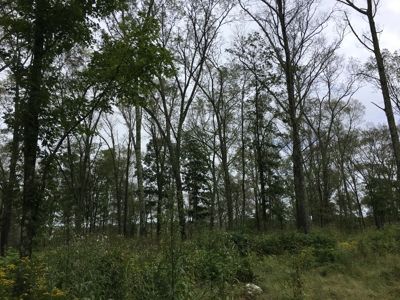Many woodland owners find that developing a forest management plan or "stewardship plan" for their forest acreage is a useful and helpful investment of time and resources, their plan being a living document that provides guidance about the "what, when and where" for recommended management activities that will help them enhance the long-term benefits and satisfactions of being woodland owners.
Essentially, any plan will consider current forest conditions and examine whether these are meeting your needs and interests, and, where appropriate suggest actions that take what you have to work with and alter conditions in some way so as to better address your long term goals and interests. A number of guides and plan templates exist to help woodland owners with this process, and professional assistance in developing a management plan is highly recommended.
Some features common to most forest management or stewardship plans are:
- Woodland owner information - names, address, contact information
- Plan preparer information - contact information for the forester
- General description of the property, including location, acreage, landscape context
- A clear statement of the woodland owner interests. Why do they own forest land, how do they use it and benefit from it? What would they like their woodland to be like in the future and what future benefits or satisfactions do they expect to derive? Is there anything they would not like to happen?
- Detailed descriptions of current forest conditions, both quantitative and qualitative, organized by stand types (vegetative communities). Foresters often refer to this information as "forest inventory" more about that below.
- Recommendations for management actions and activities, based on landower interests and expectations for the future of their land, and within the context of current conditions and what alternative desired conditions might be.
- A time schedule for implementation of management activities.
- Economic information where appropriate.
